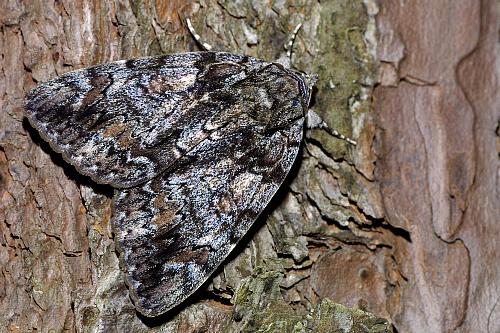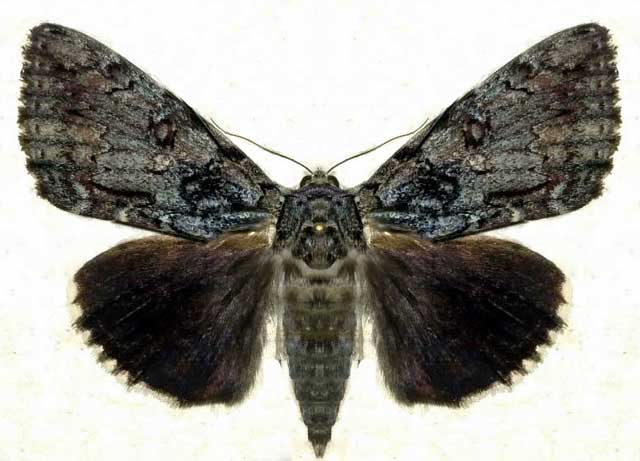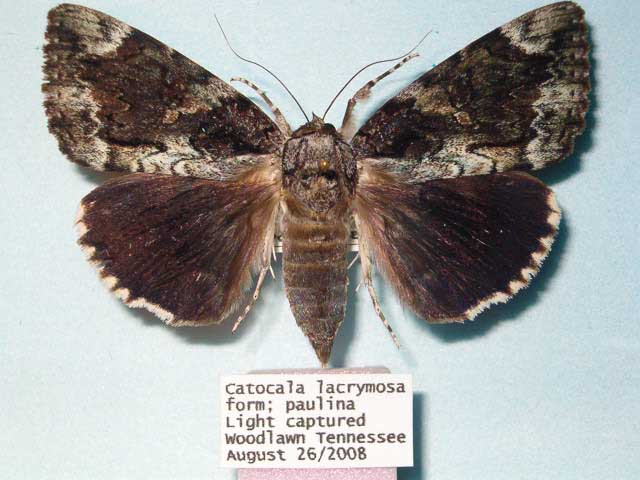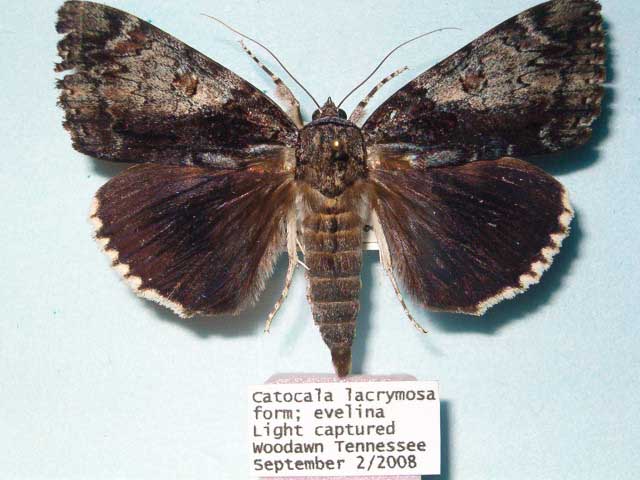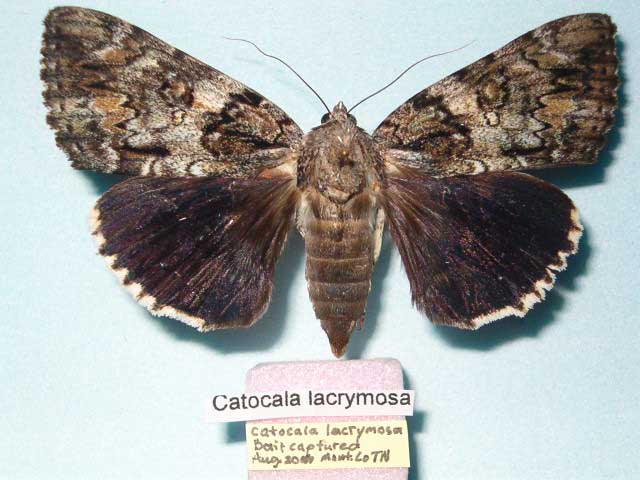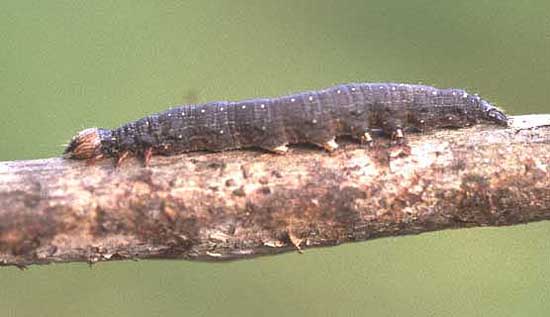DISTRIBUTION: The Tearful Underwing,
Catocala lacrymosa (wingspan: 60-82mm), flies from Massachusetts ?? and
Connecticut ??
south to
Florida, west to
Texas and
eastern Oklahoma and north
to
Illinois and
Michigan and into southern Ontario.
Tom Middagh reports them from as far west as
Minnesota.
Alabama,
Arkansas,
Delaware,
District of Columbia,
Georgia,
Indiana,
Iowa,
Kansas,
Kentucky,
Louisiana,
Maryland,
Mississippi,
Missouri,
Nebraska,
New Jersey,
New York,
Pennsylvania,
South Carolina,
South Dakota,
Tennessee,
Virginia,
West Virginia and
Wisconsin.
In Canada, it has been seen in Ontario.
The forewing is highly variable with a mixture of black, brown (wing tips and outside postmedial line) and dark grey scaling. There are usually whitish crescents,
visible in Troy Bartlett image, right, along the inner margin at the base of the antemedial and postmedial lines.
The hindwings are black with white checkered fringe, turning black near the anal angle. | 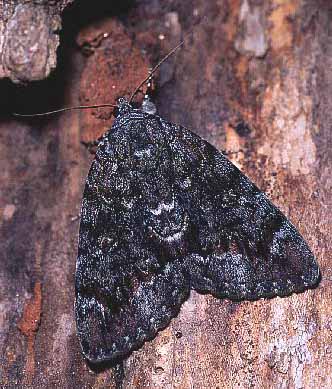
|
